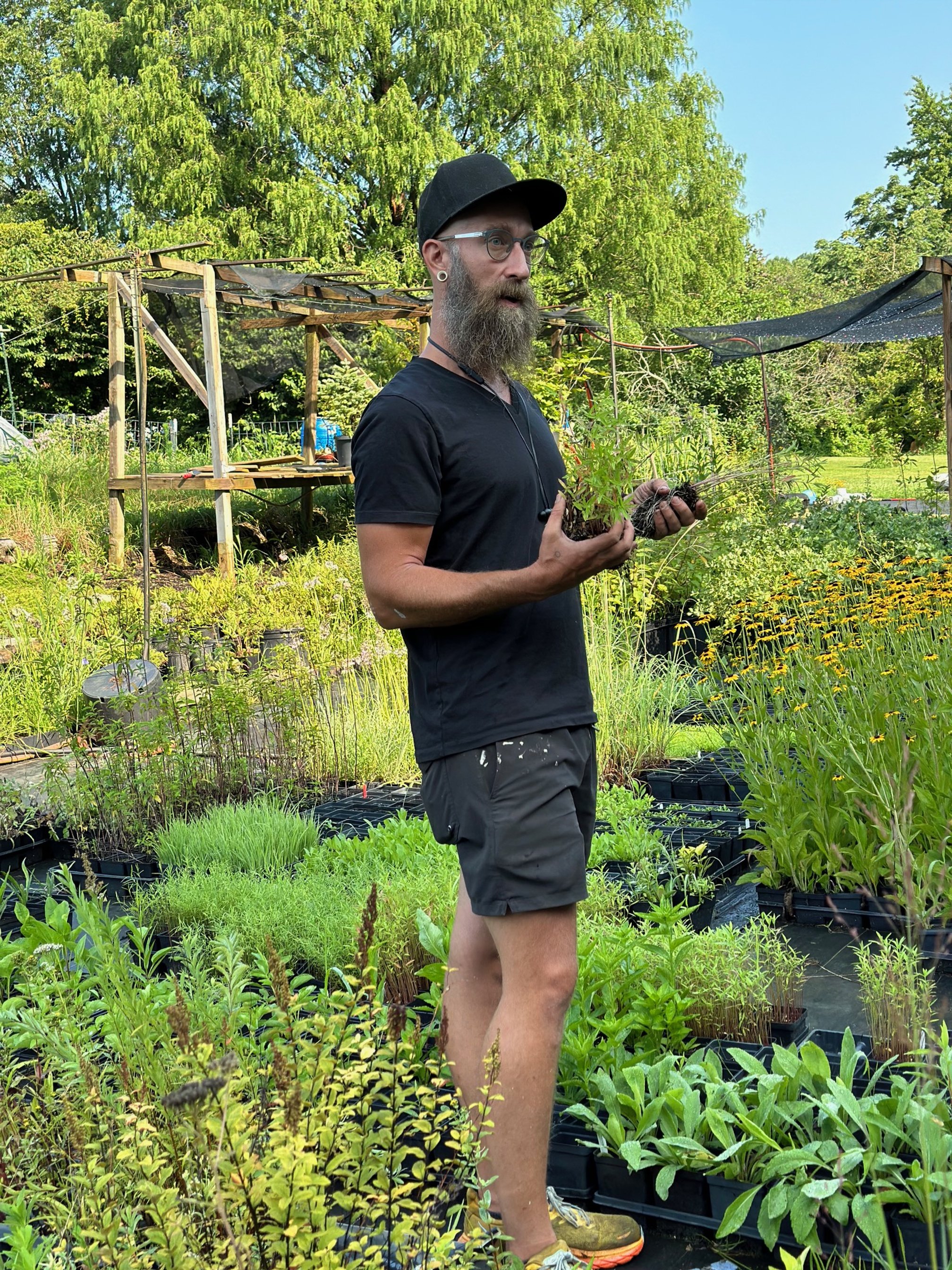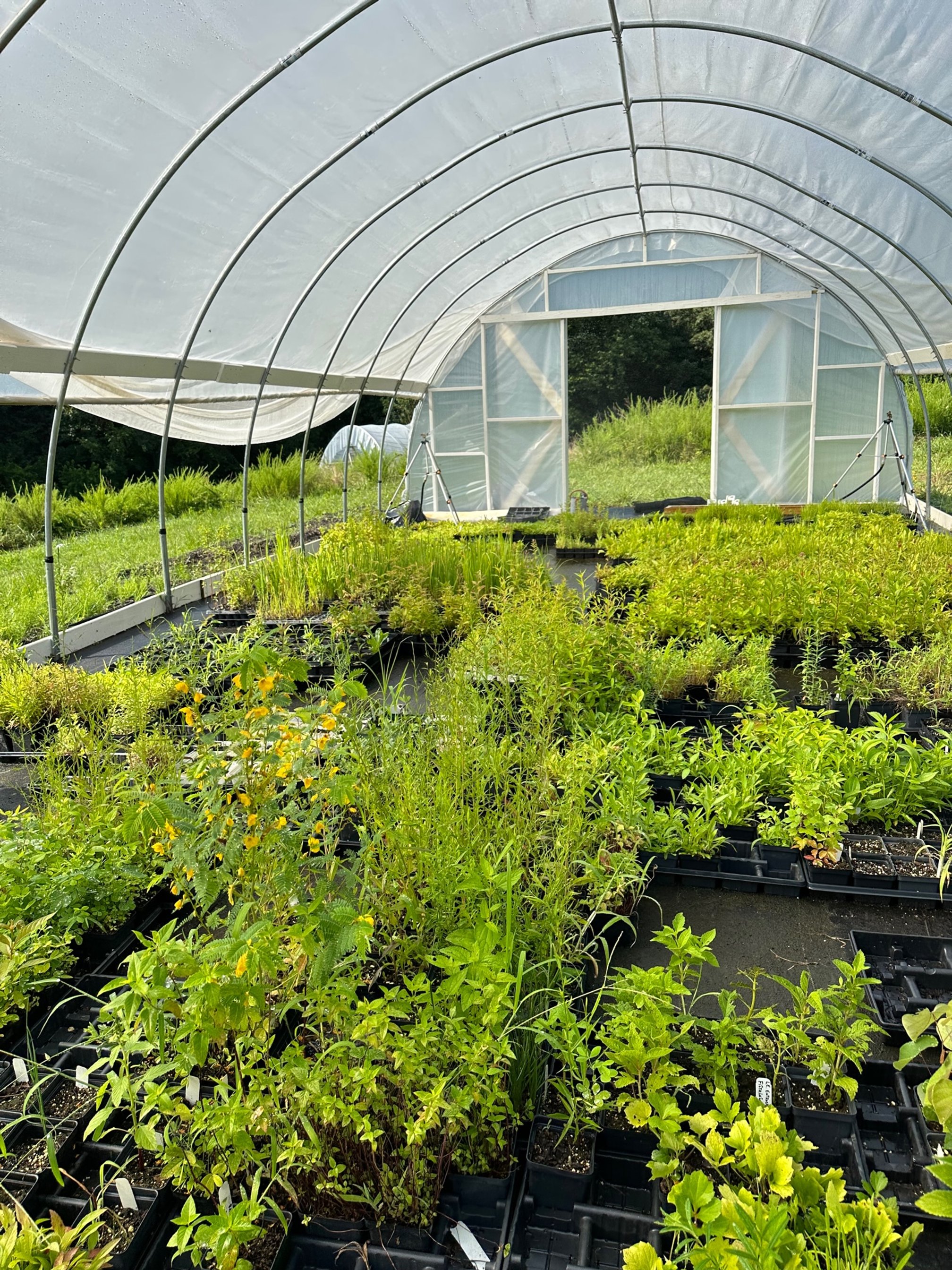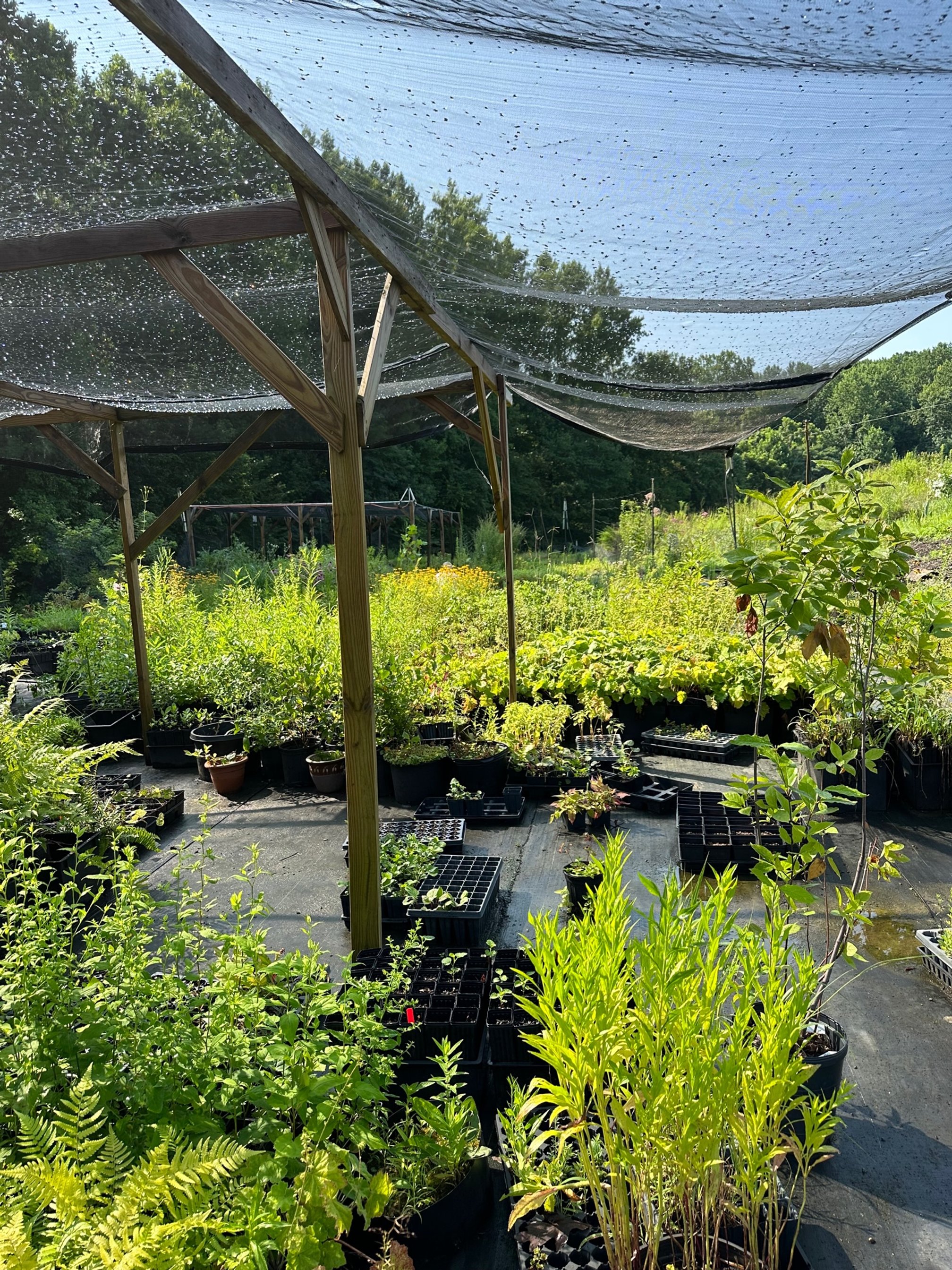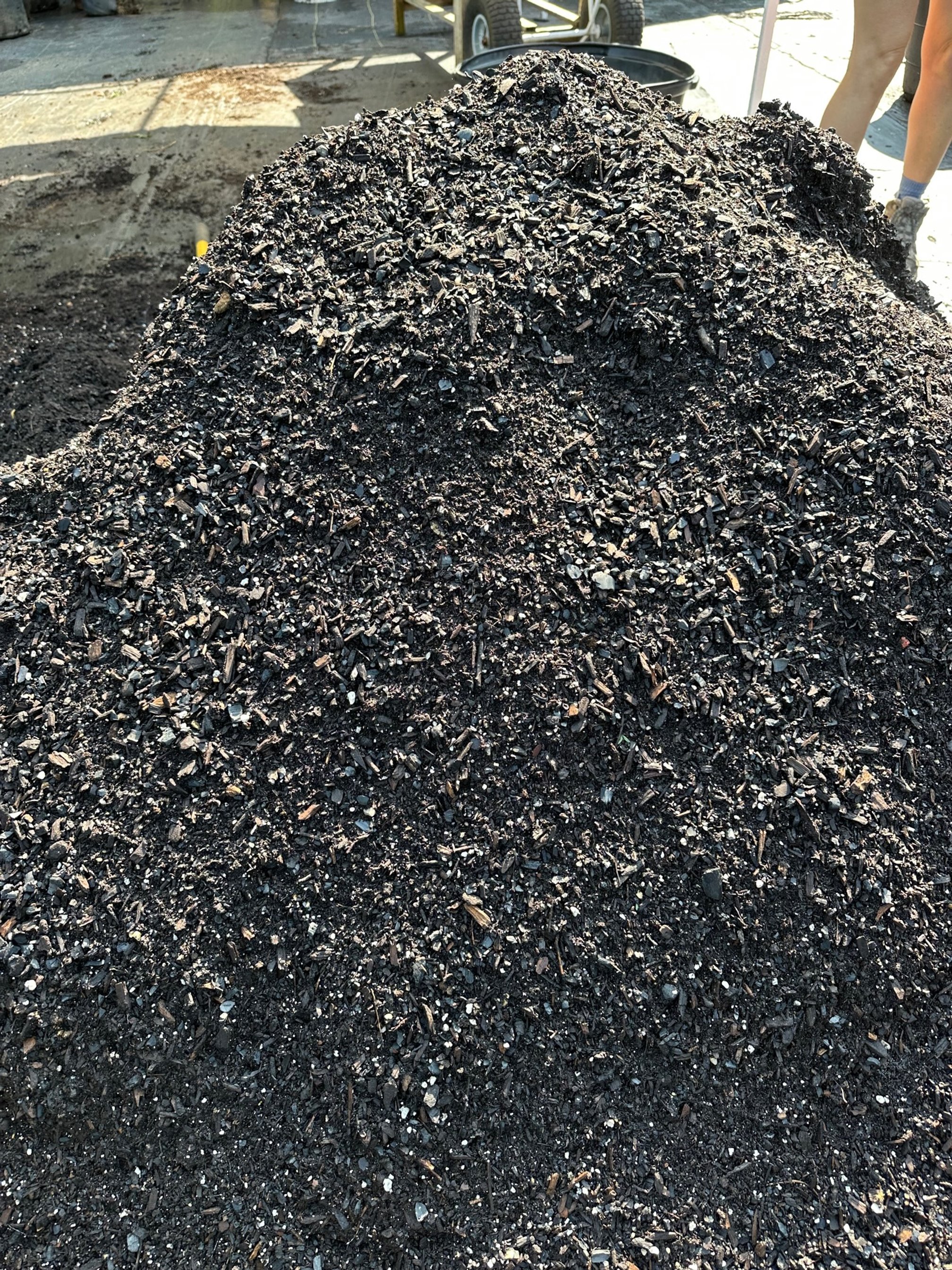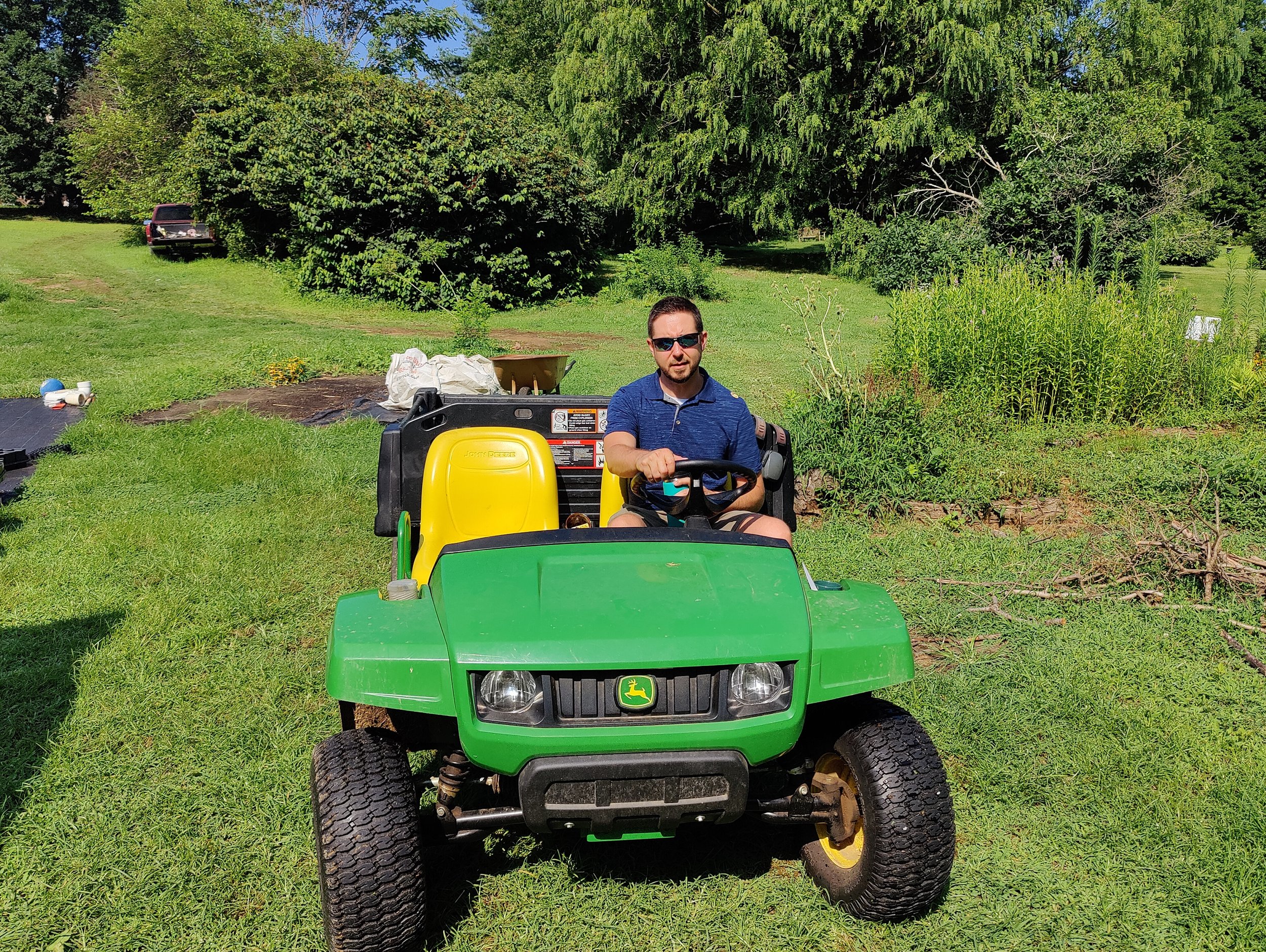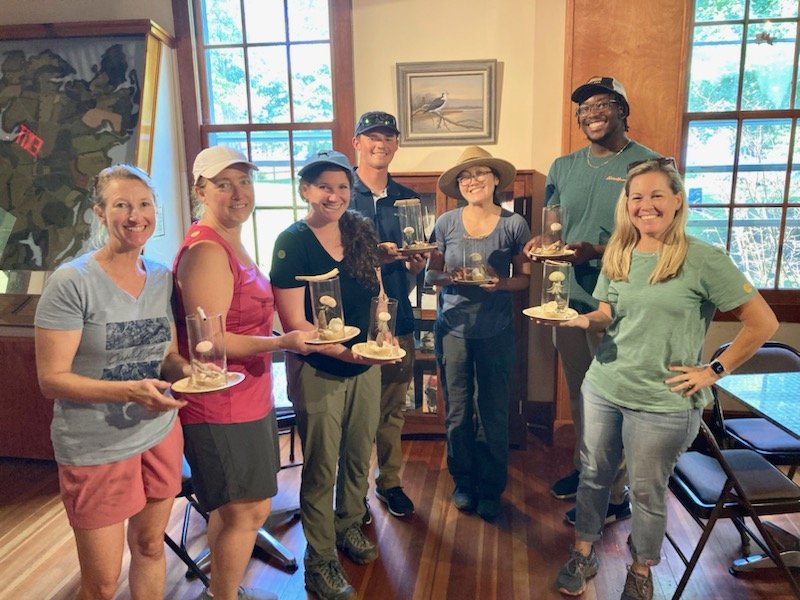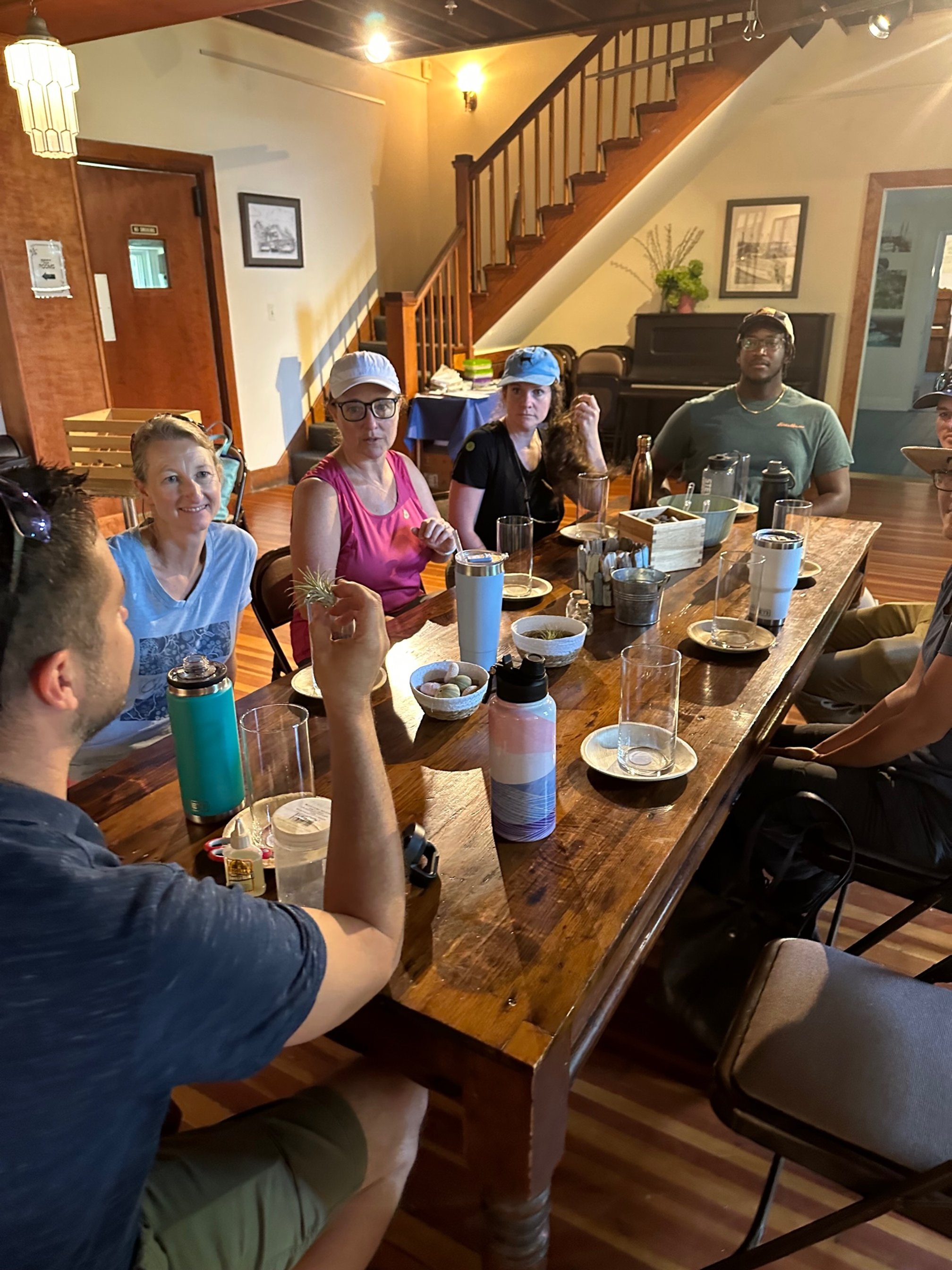August’s Native Maryland Plant
Veronicastrum virginicum (L.) Farw.
(ver-on-ee-KAS-trum vir-JIN-ih-kum)
Common Name: Culver’s Root
A native plant to most of the eastern United States, Veronicastrum virginicum, is a statuesque perennial that occurs in moist meadows and open woods. It is best planted at the rear of a garden or as a centerpiece in a circular bed, as its tall white spires may tower over other plants. Culver’s Root is slow to get established but can be considered a superior investment as it has ‘inherent longevity’ e.g., lifespan, and ‘persistence’ e.g., it holds its ground¹. Its flower spikes open from the top-down beginning as early as late spring and as late as September. Another benefit, mammalian herbivores (deer and rabbit) typically avoid eating it.
This plant is easy to identify, as its whorled leaves², long white spires, and height set it apart from other perennials. The plant generally has 5-7 whorled leaves that provide an attractive arrangement even before the flowers appear, as seen above left.
Insects visiting Veronicastrum sp. are rewarded with both pollen and nectar. It wasn’t until I attended a webinar on ‘Gardening for Moths’ by author Jim McCormac³, that I thought about its nighttime visitors. Jim enthusiastically encouraged his listeners to ‘buy this plant when you see it’ as it is a strong supporter of moths, and in fact, it’s the featured plant on the cover of his book by the same name. I couldn’t resist, after midnight the evening of the webinar I visited the Culver’s Root growing in my garden and was pleasantly surprised to see several moths seeking its nectar!
Consider taking your garden to new heights – plant some Veronicastrum virginicum and you’ll be providing food for pollinators - both day and night.
¹ ‘Planting – A New Perspective’ by Piet Oudolf and Noel Kingsbury
² Whorled leaves present as a circular arrangement of at least three leaves at each node.
³ ‘Gardening for Moths: A Regional Guide’ by Jim McCormac, Chelsea Gottfried
Alison Milligan – MG/MN 2013
Watershed Steward Class 7/CBLP
aligmilligan@gmail.com





